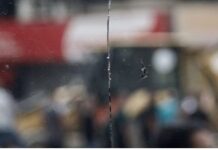Adnan Abu Amer
Middle East Monitor / March 17, 2021
The results of the recent elections within Hamas in the Gaza Strip are significant because, for the first time since it was founded in 1987, two women have joined the movement’s political bureau. This development has captured the attention of the Palestinian, Arab and international community, as it dispels the stereotype promoted by Israeli propaganda that Hamas is a dark religious movement that excludes women and does not give them the status they deserve.
Hamas itself announced that Jamila Al-Shanti and Fatima Shurrab will be members of the political bureau until 2025. Al-Shanti, 66, is a leader of the women’s movement and a member of the Palestinian Legislative Council. The Israeli occupation state placed her on its assassination list after she and other women were successful in breaking its siege of Umm al-Nasr Mosque in Beit Hanoun in 2006. A number of the women were killed and wounded by the Israel “Defence” Forces during the incident.
Shurrab is the leader of the women’s section in Hamas, and has a prominent position among its female members. She is involved in popular and Hamas activities.
“The movement’s election process allows women to be elected, and to hold senior positions in decision making,” said Hamas. “It guarantees their rights in joint or separate work.”
This sheds light on the position of women in Hamas’s political thought and behaviour. Since its inception, the movement has understood the role that women play as fundamental pillars of society most definitely not subordinate to men. It formed the Women’s Action Department in the late 1980s as one of its organisational committees like any other, with a budget and public activities.
The presence of women within its ranks has attracted new members, especially from among university students. It is worth noting that the movement’s female members have the power to mobilise and operate in the public domain. They use religious discourse that influences all Palestinians, especially in rural areas and refugee camps, where communities are more conservative and aligned with the religious dimension that dominates Hamas’s political discourse.
The 2006 legislative election presented a historic opportunity to highlight the role of women in Hamas, which was keen to field women candidates. In a statement dated 2 January, 2006, it announced its proposal to have the women standing alongside men; to introduce legislation that protects women’s rights; and its intention to resist attempts to marginalise women. Six women won seats on the Legislative Council standing on the Hamas list: Jamila Al-Shanti, Maryam Farhat, Samira Al-Halaiqa, Mona Mansour, Hoda Naim and Maryam Saleh.
Nevertheless, the election of Al-Shanti and Shurrab to the political bureau confirms a real shift within Hamas in terms of its positive view of women. It is a move that will see them assuming leadership positions in municipalities, parliament and ministries, as well as within the organisation.
The headquarters of the Hamas women’s movement in Gaza City is a hive of activity. It is there that its female membership is involved in committees for, inter alia, training, volunteering, public relations and education. This is natural, of course, because Hamas knows from experience that women have always been at the heart of resistance to the Israeli occupation. They have demonstrated their capabilities and effectiveness in front-line roles, which is why Hamas has integrated women completely within its organisational structure, not just in a separate department.
Women are members of the General Shura Council, the highest body within Hamas. There is still a lot of work to do to achieve full representation of women in Hamas institutions, though, despite the great leap forward in recent years, and there is an ongoing debate to change the perception of such representation at the very top of the movement.
It is worth pointing out that there is an important difference between the two major bodies within Hamas, the Shura Council and the Political Bureau. The former has a non-binding advisory role for the leadership, and has dozens of members, including several women. The political bureau, meanwhile, has just fifteen members and its decisions are binding on the movement. It is heartening that women have finally broken through the glass ceiling and been elected to its ranks.
Since its foundation, Hamas has acknowledged that the Muslim woman has “a role no less important” than that of the Muslim man in the liberation struggle. “She is the maker of men. Her role in guiding and educating the new generations is great.”
Nevertheless, women’s involvement in armed resistance has been limited due to legal barriers, religious restrictions and societal norms. It was unacceptable until Reem Riyashi carried out an attack against Israel in January 2004 at the Erez Crossing in northern Gaza. This caused a shift in Hamas’s view of such involvement. In April 2007, the movement’s military wing, Al-Qassam Brigades, announced the formation of its first women’s cell.
The election of two women to the Hamas political bureau shows the extent to which the movement relies heavily on women today, to a degree no less than men, especially in popular mobilisation and public support. This will be essential in the upcoming election campaigns over the next few months. Jamila Al-Shanti and Fatima Shurrab have set an example that is likely to be followed by many more women within Hamas in the years ahead.
Adnan Abu Amer is the head of the Political Science Department at the University of the Ummah in Gaza












